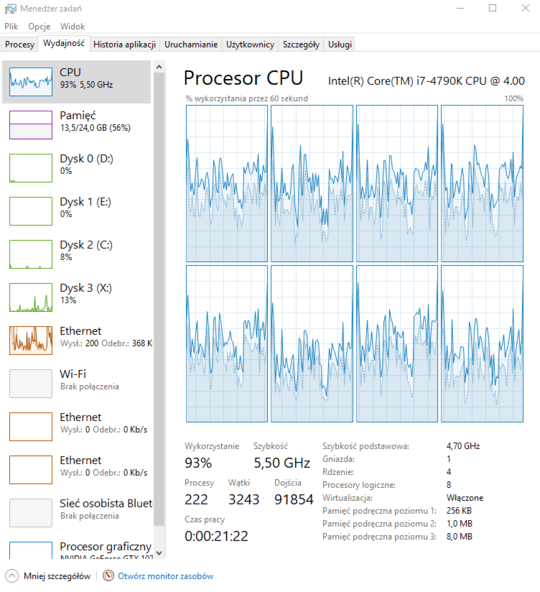At the time that screenshot was taken, your CPU had dynamically overclocked itself to 5.5GHz.
Task Manager shows your CPU base speed is set to 4.7GHz, as you expected. The 5.5GHz is in fact the automatic overclocking (Turbo Boost, if you're using Intel); it is unlikely to last very long as it generates excessive heat. You may also see, at times when the computer is fairly idle, the current speed drop well below the base speed; on my machine (with a 4.0 GHz AMD chip, not overclocked beyond ), I've seen the current speed go anywhere from 1.6 GHz to 4.2 GHz, depending on load and CPU temperature. Intel chips do the same thing. Manual overclocking changes the base clock speed, which all dynamic over- and under-clocking is relative to, but you shouldn't expect the CPU to reliably run at the base clock speed unless you disable the dynamic frequency scaling behavior that all modern CPUs (and GPUs) have.

I would suggest using Intel’s own monitoring tools: https://www.intel.co.uk/content/www/uk/en/support/topics/utility-tools.html
– James P – 2018-10-03T07:43:27.297can you point me to a particular trustworthy tool? – olokos – 2018-10-03T22:00:02.267
@olokos Questions seeking software recommendations are out of scope here at SuperUser – Ramhound – 2018-10-04T05:34:02.753
@Ramhound James pointed only to a generic intel download page. I'm not asking for software recommendations, I'm asking for a way to properly check actual current frequency which CPU is running at. If you know an easy hardware way to find out CPU frequency - I'm open for suggestions. – olokos – 2018-10-13T15:15:59.227
@olokos - You asked for a trustworthy tool. I was reminding you that software recommendations are out of scope. There have been no close votes issued against your question, my comment, was simply reminding you what is within scope. – Ramhound – 2018-10-13T17:41:27.090